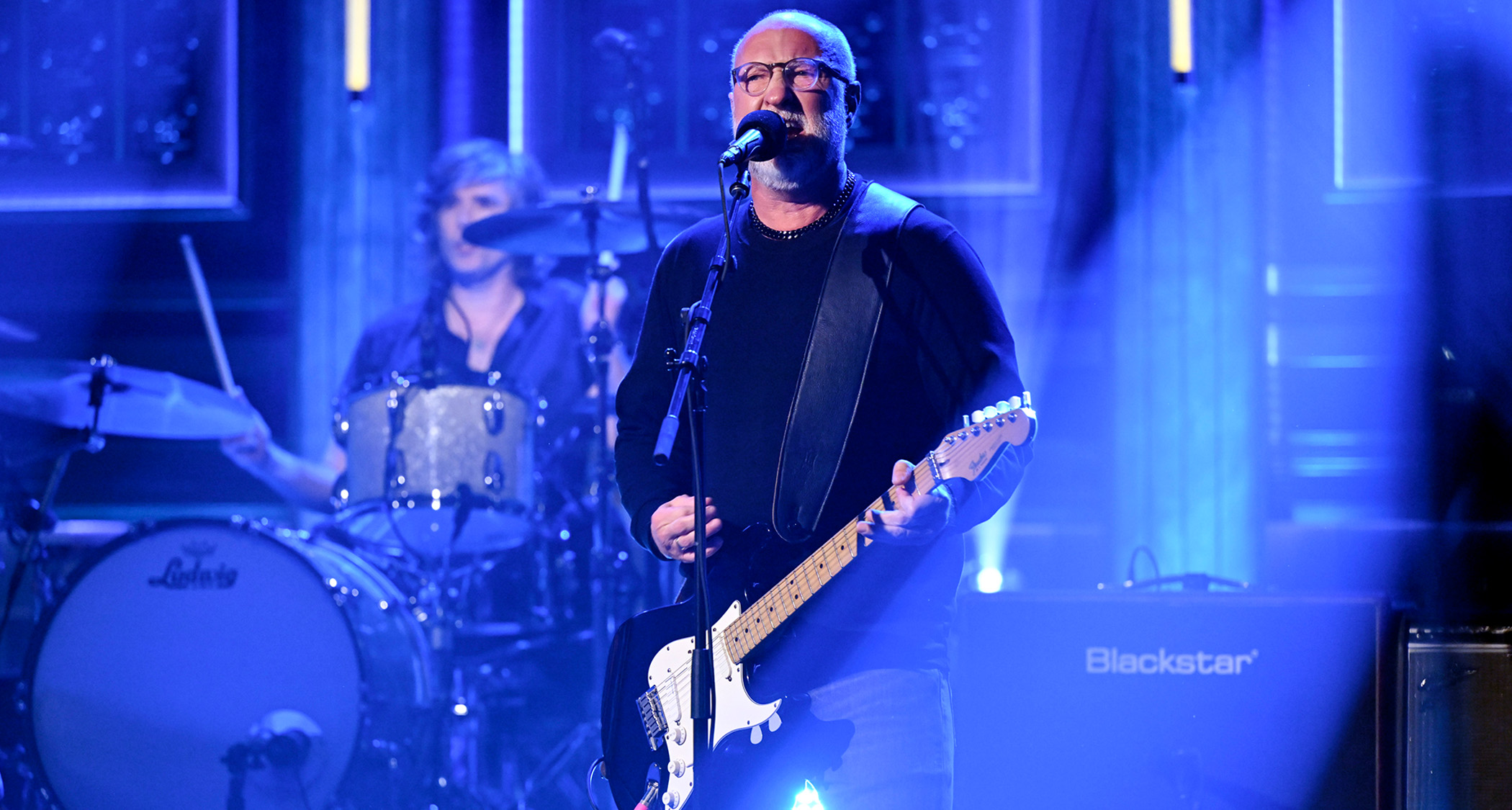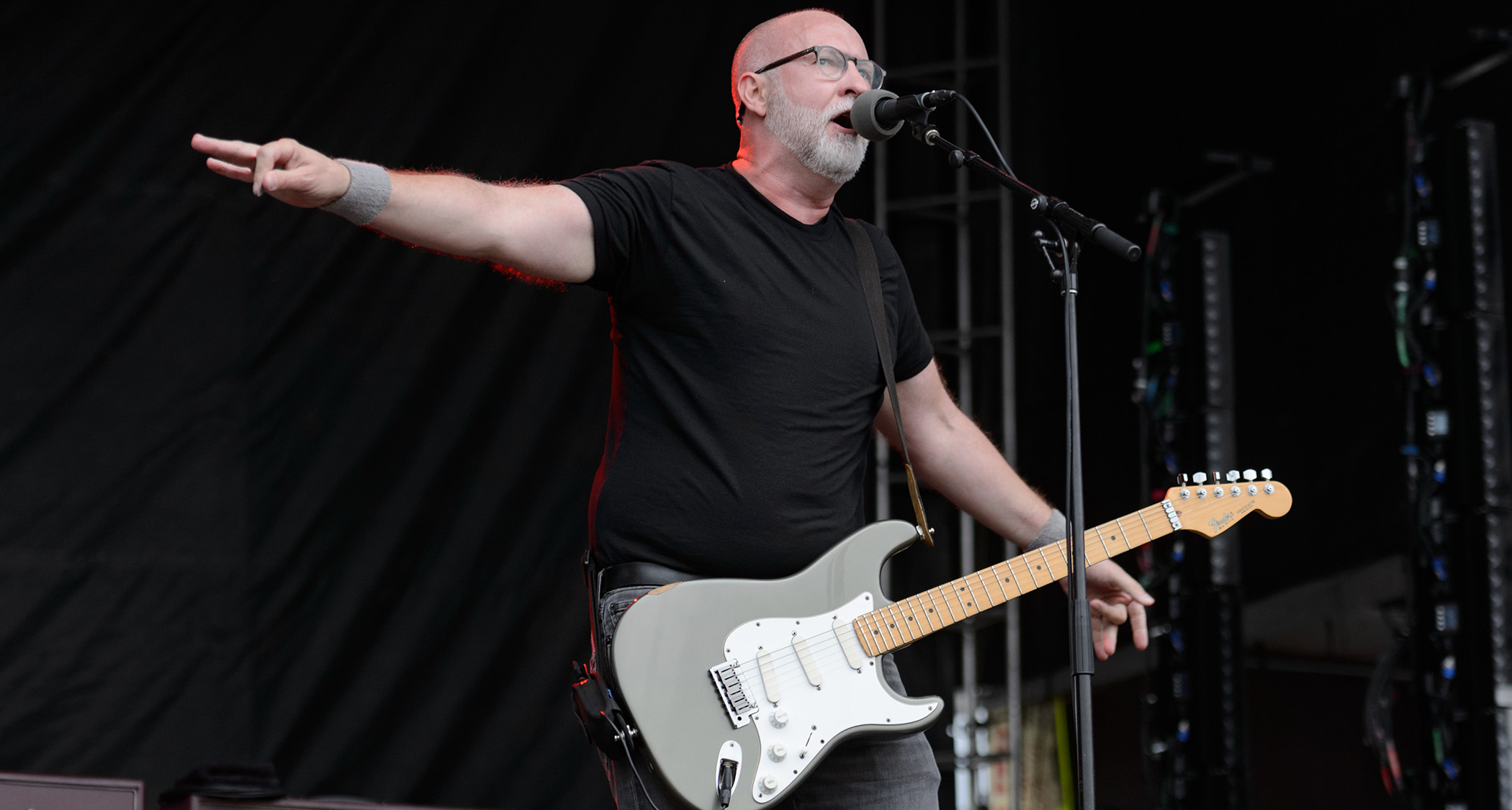“The original blue Strat that I bought in ’88 became the ‘Bob guitar’… that was when I started reinventing the way I looked at guitar”: From Hüsker Dü’s “fighter jets” to Sugar’s “sheets” of guitar, how Bob Mould built his wall of sound
With his trusty Fender Strat in hand and at a young 64, Bob Mould is an evergreen icon of alt and indie guitar – and he’s back with a new solo album

Bob Mould’s ferocious wall of sound has been cited as an influence by everyone from J Mascis of Dinosaur Jr and Joe Genaro of The Dead Milkmen, to Dave Grohl of Foo Fighters. It all started with Hüsker Dü, a punk-meets‑college-rock assault that Mould recalls as being akin to “three fighter jets racing to get there first”.
Though in all fairness, fans of classic records such as 1984’s Zen Arcade and 1986’s Candy Apple Grey might liken those records to more than speed-racer pyrotechnics.
Of particular note is Mould’s adoption of Yamaha’s G100 solid-state amp with two Fender Concert heads up top. That, along with various distortion and chorus boxes hooked up with his beloved blue Strat, not only created Mould’s sound but one that would be mimicked by going on two generations of indie-rock-loving players.
Mould, of course, knows this, even though he describes his playing as “pretty unremarkable”. But he does admit there’s a certain nuance that can’t be described, telling Guitarist: “I can’t take out a protractor and tell you how I do it, but it’s everything in between. My left hand is unremarkable. A lot of the stuff that I do with my right hand… it’s really the stuff between the notes that I don’t even know that I’m doing.”
He explains further: “It’s not muting, it’s not harmonics, but there’s things when I hold the pick and then I look at the battle scars on my thumb and forefinger, like how the pick is almost a prop, and my hands are wrecked. It’s whatever’s in the right hand and it’s between the notes.”
That assessment checks out. What also checks out is how Mould describes the “refinement” (no pun intended) of his playing with Sugar, his post-Hüsker Dü group that’s lauded for quiet-loud dynamics, more wall-of-sound rhythms, simple leads and one particular banger of a record, 1992’s Copper Blue.
To this day, Mould, who isn’t copying that record, notes its importance on his sound. “I did some more electronic-based records using guitars as information that I could sample or chop up to do different things, you know? The results were mixed, but there’s some nice playing there.
All the latest guitar news, interviews, lessons, reviews, deals and more, direct to your inbox!
“But since 2012, it’s been back to celebrating Copper Blue,” he admits, “and writing complementary records that had an adjacent hook and feel. I don’t think I’ve tried to copy that, but I tried to remember and let that be a sort of shadow template. So here we are, here and now.”
Speaking of here and now, Mould has a new record out called Here We Go Crazy. True to form, there are sheets of rhythm guitars, big chunky sounds and lyrics that cut into your soul like a hot knife through butter.
The record deals with a lot of the uncertainty of the early part of the decade. It deals with harsher, darker images
“The record deals with a lot of the uncertainty of the early part of the decade,” Mould says. “It deals with harsher, darker images. And then they get escalated through act one, and then act two really goes low and digs into heavier, psychological and emotional areas. Then act three lifts people out of it. It’s sort of, ‘Okay, here we are. We’re at the home stretch. Let’s try and get out of this gracefully as we shine up.’”
As for where Mould goes from here, one could assume based on track record, but given that same track record, one should look out for curveballs. Mould has his tried-and-true reliance, but he’s never been afraid to deviate and has no preconceived notions as to what the future looks like.
“Do I get louder?” he questions. “Do I get quiet? Do I get introspective? Do I get outrageous? I don’t know what life will bring. I think the next few months will sort of be the wind in the sail. I guess we’ll figure out what direction the sail is going to go.
“I don’t have anything mapped out. I’m just sort of taking the temperature right now and getting the prognosis. I’ll operate after that, I suppose.”
If every album tells a story, what is your latest, Here We Go Crazy, saying?
“This is probably the most rhythm guitar-centric record I’ve written in ages, which is a thrill for me. I have never fancied myself a guitar virtuoso; I have a pretty unique style, which is obviously an amalgamation of others who have come before me. But the guitar playing on this is very simple, so there’s not a lot of fireworks on display. Guitar-wise, it’s written from a very simple point of view.”
How would you describe your point of view as a player?
“Just letting the songs do the work. When I start flexing solos… that just wasn’t part of this process, you know? There’s always the temptation to make more icing than the cake actually needs, but I really backed away from that. I relied on two guitars, one left and one right, small amps and a distortion box.”
Does that process differ much from how you usually operate?
“It’s very different from the other records that I’ve made in the last decade, where it was walls of 4x12s and lots of compression up front. For this, I just plugged into the amp, so it’s a tighter sound. I hear the difference in eliminating the big amps – especially in the centre of the mix – because they take up so much space.”
While listening to Here We Go Crazy, a sheet of guitar sounds washes over you, like you’d hear on Sugar’s Copper Blue. Are you using any of the same amps that you used back then?
“The plan was to take the big stacks out and clear out some of the fat that can muddy things up. I’ve been using Blackstar Artisan 100s, which is such a great sound. It is my sound, but for this I went quieter with the Blackstar stuff; I got an Artisan 30, which instantly brought things into focus.
“Then I’ve been enhancing the Blackstar sound – I’ve gone back to [Fender] Silverface Deluxes. You brought up Sugar, but bringing back the Silverface is more in line with 1985 or ’86 Hüsker Dü.”

Is that when you developed the tonal recipe that became synonymous with you?
“The genesis of that sound would have been when I started using the Yamaha G100 solid-state head. I would have two 4x12s and then I would have a pair of Fender Concerts on top of that. The idea, which I really refined during the Sugar era, was to allow the solid-state amp to push the lows and mids and then rely more on a tube amp to take all the top stuff off and have the mid-harmonics.
“Then, with Sugar, I had gone to Roland JC-120s, running 4x12s with Fender Concerts on top. That’s when the sound becomes the sound you’re describing now. And then came the Blackstars, which is a Class A valve amp, though you’ve got to be careful with the saturation. But that marriage is how I put that sound together.”
One song that encompasses that ethos on the new album is Fur Mink Augurs. What’s the story there?
“The way I construct albums is there’s a tent pole and then you drag the fabric out with some really strong stakes, then you sort of colour up the fabric. So I usually have a side one opener and closer, and a side two opener and closer, and Fur Mink Augurs had that side one closer spot because I knew that song would have a long wind-out.
My description of that song, beyond the sonics, you know, the emotional content is: ‘How the f*** did I end up here?’
“My description of that song, beyond the sonics, you know, the emotional content is: ‘How the fuck did I end up here?’ In our lives, we all make these choices, some are big and we give them a lot of thought, and others are impulsive. Sometimes, we end up in situations where we’re in a mad place, and I ask myself, ‘How did I end up here?’ It left me with this conundrum…”
What was the conundrum?
“What do I do after that? [laughs] When somebody flips the album over, what you hear is it immediately segueing into me getting myself in position in a wooden chair to record. Lost Or Stolen is essentially a solo song that I wrote during overdubs – that’s not a band track.”
In creating the guitar sounds on this new record, what guitars did you lean on the most?
“It’s Strats. The original blue Strat that I bought in ’88 became the sort of ‘Bob guitar’ that everybody thinks of. I mean, that one doesn’t leave the house any more. So when I’m up North and that guitar is around, I play it. And I’ve got a black and a grey Strat that have been my workhorses for the last decade, so a lot of stuff gets written on those. Then I’ve got an old Gibson J-series acoustic with a big body and a little pickup in it. I write a lot on that, too. That’s a nice ‘parlour’ guitar.
“So it’s the two Strats, the black and grey, the old Gibson – and I’ve got an old Kay acoustic. It’s such a trashy guitar [laughs]. I love it – it’s just so clangy, you know? It doesn’t have a lot of body and just sounds like metal rattling around in a box.”
Here We Go Crazy is a reminder of your enduring influence of indie and alternative guitar music. A lot of players from that scene often namecheck you – and the gear you’ve described above. That has to be very gratifying.
“I’m always thrilled to hear that. When people say, ‘Your sound got me started,’ or, ‘Your sound took me in a direction,’ God, when I look back on how I got to my sound… I think of [Pete] Townshend, Johnny Ramone and Johnny Thunders, you know? The Beatles, too, but more for songwriting and the structure of songs.”
You mentioned that blue Strat and your Yamaha amp earlier. Do you still identify with the player who brandished that gear?
“With the beginning of the blue Strat and the Yamaha, that was when I started reinventing the way I looked at guitar. That was a big upgrade. I think Sugar was a refinement of my songwriting and my playing. I learned so much and took that knowledge, and I could feel that I was way more in control of my playing. With Hüsker Dü, it was like fighter jets trying to outrace each other [laughs]!”
How so? And aside from the obvious, how was Sugar different?
“If you listen to Hüsker Dü, there’s no foundation at all. That’s not a knock; it’s just three jets racing to get there first. That’s what that band sounds like. But with Sugar, it was like this large sort of fighter ship that you would land those jets on. It was very slow. It was very stable. It was hard to move it. I had to learn how to do that just by the way those guys played. That was a big jump for me.”
So, you’ve got Hüsker Dü, Sugar and what you’re doing now. Is this sort of your third – and longest – iteration as a guitarist?
if you go back and listen to the Sugar records, really, that’s the real refinement of that ‘sheets of rhythm guitar’ sound
“I went through that and now there’s this third iteration, yeah… I learned a lot leading up to it. Maybe I’ve just been treading water since [laughs]. But no, I’ve learned other stuff. But if you go back and listen to the Sugar records, really, that’s the real refinement of that ‘sheets of rhythm guitar’ sound. Those records had much sparser leads, too. It was a lot of octave lead stuff.
“The first solo at the end of Copper Blue on Man On the Moon, that fixed position moving through the neck is something that I started; I sort of came into that there. That became a blueprint for me to work with for solos. It’s a comfortable position that allows me to ring other strings around it, so that became a feature at that point.”
Where do you go from here?
“I don’t know. When I finish interviews today, I’m going to go out in the sun and get some exercise [laughs]. After the in-stores, the promo, radio and the band tour… I mean, we’ll see how people are feeling. We’ll see what people think. By then, we’ll have a prognosis on the campaign emotionally and spiritually, and we’re just trying to figure out where to go next with it.”
- Here We Go Crazy is out now via BMG.
- This article first appeared in Guitarist. Subscribe and save.
Andrew Daly is an iced-coffee-addicted, oddball Telecaster-playing, alfredo pasta-loving journalist from Long Island, NY, who, in addition to being a contributing writer for Guitar World, scribes for Bass Player, Guitar Player, Guitarist, and MusicRadar. Andrew has interviewed favorites like Ace Frehley, Johnny Marr, Vito Bratta, Bruce Kulick, Joe Perry, Brad Whitford, Tom Morello, Rich Robinson, and Paul Stanley, while his all-time favorite (rhythm player), Keith Richards, continues to elude him.
You must confirm your public display name before commenting
Please logout and then login again, you will then be prompted to enter your display name.








